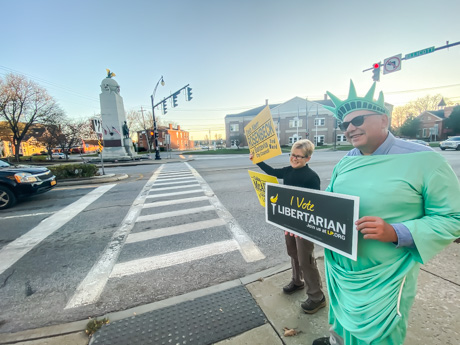batavia
Heavy rain anticipated during trick-or-treat hours
The National Weather Service is forecasting heavy rain, about a half-inch, between 4:30 and 7 p.m. for Genesee County.
Those are prime trick-or-treat hours but at least two venues in Batavia are moving their Halloween-related events indoors.
There is an event, a fall festival, starting at 5 p.m. at City Church's St. Anthony's facility on Liberty Street and what was originally a "trunk-or-treat" event at Grace Baptist on Vine Street at 5:30 p.m.
As for the rain, expect flooding in low-lying areas. Motorists are urged to slow down during the storm. Brief gusty winds are expected around 7 p.m. before strong winds arrive before the morning.
Law and Order: Bank Street woman accused of letting people sell crack out of her apartment
Marya B. Cole, 36, of Bank Street, Batavia, is charged with criminal nuisance. She was arrested on Oct. 23 after allegedly allowing people to sell crack cocaine out of her apartment between Sept. 9 and Sept. 28 in the City of Batavia. Cole was issued an appearance ticket and released. Cole is due in Batavia City Court at 1 p.m. on Nov. 12. The case was handled by Batavia Police Officer Wesley Rissinger, assisted by Officer Mitchell Cowen.
Lizbet D. Cramer, 42, of Dellinger Avenue, Batavia, is charged with failure to exercise control of a minor. Cramer was arrested Sept. 9 after an investigation that alleges she allows a child to violate curfew and fails to abide by probation stipulations. She was issued an appearance ticket and is due in Batavia City Court on Nov. 12. The case was handled by Batavia Police Sgt. Christopher Camp.
Aaron W. Clark, 30, of Oak Street, Batavia, is charged with fourth-degree criminal mischief. He was arrested at 4:20 p.m. on Oct. 28 on Oak Street in Batavia after allegedly punching and damaging a wall at a residence. Clark was issued an appearance ticket and is due in Batavia City Court at 1 p.m. on Nov. 19. The case was handled by Batavia Police Officer Stephen Cronmiller.
Bobby Lee Mobley, 34, no address provided, is charged with: obstruction of governmental administration; criminal possession of a controlled substance; and criminal contempt. Mobley was arrested at 11:54 p.m. on Oct. 27 on Maple Street in Batavia following a domestic incident. Mobley was arraigned in Batavia City Court on Oct. 28 and jailed in lieu of $5,000 cash or bond. The case was handled by Batavia Police Officer Peter Post, assisted by Officer Arick Perkins.
Aaron M. Hatt, 23, of Broadway Road, Alexander, is charged with third-degree criminal trespass. Hatt was arrested on Oct. 19 after allegedly entering and remaining on private property without permission to do so at 9:07 a.m. that day on Howard Street in Batavia. He was processed at the scene and released with an appearance ticket for Oct. 29 in Batavia City Court. The case was handled by Batavia Police Officer Adam Tucker, assisted by Officer Miah Stevens.
Ridge A. Bono, 28, of Ross Street, Batavia, is charged with trespass. Bono was arrested on Oct. 21 following a trespass complaint alleging he went on property on North Street in Batavia at 4 p.m. on Oct. 20 that he had previously been banned from. Bono received an appearance ticket and is due in Batavia City Court on Nov. 5. The case was handled by Batavia Police Officer Sean Wilson, assisted by Officer Jason Ivison.
Public information meeting on Upton Road Bridge project set for Nov. 19
UPTON ROAD BRIDGE PROJECT
There will be a public informational meeting on the replacement of the Upton Road Bridge on Tuesday, Nov. 19, at 6 p.m. at the Batavia Town Hall, 3833 W. Main Street Road.
For further information or if you require special arrangements (translators, handicap accessibility, etc.) contact:
Tom Lichtenthal, Town of Batavia Asst. Town Engineer
585-343-1729, ext. 218
Woman in Batavia accused of selling drugs to Task Force agents
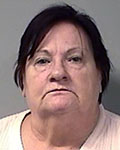
A 64-year-old woman living in Batavia has been arrested on suspicion of selling controlled substances following an investigation by the Local Drug Task Force.
Linda P. Thomas, of West Main Street, is charged with criminal sale of a controlled substance, 3rd, criminal possession of a controlled substance, 3rd, criminal sale of a controlled substance, 5th, and criminal sale of a controlled substance, 5th.
Thomas is accused of selling hydrocodone to an agent of the Local Drug Task Force and alprazolam to an agent on two other occasions.
Thomas was arraigned in County Court and released under supervision of Genesee Justice.
O'Lacy's introducing new porter brewed for pub by Eli Fish
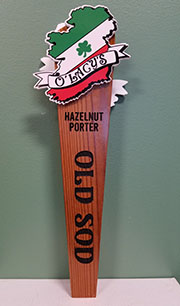
O’Lacy’s Irish Pub & Eli Fish Brewing Company have worked together and created a custom-made beer, hoping to show the public and business community that its not always about competing, but when you work together, both businesses can benefit!
On Tuesday, Nov. 5th , 5-9 p.m., O’Lacy’s Irish Pub will be hosting a kick-off party for the new hazelnut porter that has been custom made for O’Lacy’s Irish Pub by Eli Fish Brewing Company.
The collaboration was inspired as Kent Ewell (owner, O’Lacy’s), Chris Hoffman (bartender at O’Lacy’s) and Matt Gray (wwner, Eli Fish) were discussing the large amount of draft beer that O’Lacy’s sells.
“We should make you your own custom brew,” Gray said. “You pick the type (lager, ale etc.) and flavor if you wish and we can make it."
After reviewing what was currently on tap at O’Lacy’s, Ewell chose a hazelnut porter, which is named appropriately, “Old Sod Hazelnut Porter.”
After sampling the test batch, Ewell said, “I think this is very unique and something people will enjoy.”
At Tuesday's kick-off party, pints will be on special for $3.50. Come on out and try the new “Old Sod Hazelnut Porte,r” which pairs perfectly with O’Lacy’s Reuben sandwich and famous homemade chips and dip.
Murder suspect refuses to leave jail for court, judge tells deputies to bring him by force next time
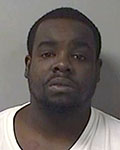
A former parolee from Rochester accused of murdering a good Samaritan on Ross Street at the end of May refused to appear in court today for an evidentiary hearing and Judge Charles Zambito set a new hearing date and ordered deputies to bring him in by force next time if necessary.
Quinten Edmonds is being held at the Genesee County Jail while awaiting trial. He is accused of killing Michael R. Paladino, 43, after Paladino reportedly saw Edmonds hitting a woman, who had been a passenger in the Rochester man's car, outside of Paladino's apartment on Ross Street.
A grand jury has indicted Edmunds on second-degree murder, a Class A-1 felony.
Batavia Police Chief Shawn Heubusch said after the incident that their investigation indicated that Edmonds was in a vehicle in the City when an argument began between Edmonds and at least one of the two women in the vehicle with him. The vehicle stopped on Ross Street and the argument continued outside the vehicle.
Emergency dispatchers received a call of the disturbance at 5/7 Ross St. at 12:44 a.m.
Paladino suffered multiple stab and cut wounds to his upper torso and head and collapsed in the entryway of his apartment. He was transported by Mercy EMS to UMMC. He was pronounced dead at 5:05 a.m. by Coroner Don Coleman.
The women in the vehicle fled the scene right away and a police officer saw a vehicle driving erratically and stopped it in the parking lot just east of St. Joseph School.
Edmonds is next expected in court at 3 p.m., Dec. 12.
Man faces up to 20 years in prison after admitting to hammer attack on Ellicott Street resident
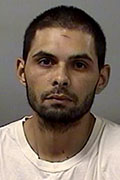
Benjamin Santiago Jr.
A man accused of entering an apartment on Ellicott Street and attacking the resident with a hammer before stealing property and a credit card and then stealing a truck from another person appeared in Genesee County Court today and accepted a plea bargain he had previously turned down.
With the guilty plea in the assault and robbery case, Benjamin Santiago Jr., 30, is facing a prison term of eight to 20 years.
Sentencing is scheduled for Dec. 5 at 2 p.m.
At 9:15 p.m., June 2, Santiago entered the apartment of a person he knew on Ellicott Street and demanded money. When he didn't get it, he attacked the man with a hammer, then stole items and fled on a bicycle he had stolen earlier in the day from a location on Bank Street.
He then located a 2010 Ford F150 Lariat super cab truck belonging to a third victim and fled to Rochester, where he was located and arrested by police there.
Santiago had rejected a similar plea offer before the case was referred to the grand jury.
He came into court facing an eight-count indictment, including first-degree robbery and a first-degree assault, and with the previous plea offer no longer on the table; however, after a conference with Judge Charles Zambito, Santiago was allowed to enter the plea under the same conditions as the previous offer.
Santiago has been arrested previously in and around Batavia, including a case involving problems at a local hotel that led to a multi-agency manhunt 2011. The two brothers in the case were later accused of trying to hire somebody to kill Santiago. Eventually, that case led to a prison term for Santiago. He was most recently accused of stealing $800 in tools from Crocker's Ace Hardware in Le Roy.
GCEDC Board to consider approving tax incentives for two projects, and accepting application for a third
Press release:
The Genesee County Economic Development Center (GCEDC) Board of Directors will consider approving incentives for two capital investment projects in the Town of Le Roy and an application for incentives for a project in the City of Batavia at the board’s Oct. 31st meeting tomorrow.
Wright Associates is requesting incentives for a proposed $9.5 million capital project that would include the purchase of an existing 139,000-square-foot building on Wright Avenue in Le Roy. The beverage distribution company based in Rochester in seeking approximately $854,452 in mortgage, sales and property taxes. (Previously, Wright's project was estimated to cost $8.9 million, but additional costs in the final application pushed the projected total to $9.5 million.)
The project would create 125 new full-time jobs in Genesee County.
Wendt Propane Gas Service is requesting incentives in order to build a new 9,600-square-foot facility at the corner of Route 19 and North Road in the Town of Le Roy. The company will be expanding its propane service to local residential, commercial, industrial and agricultural customers. The company is seeking approximately $120,000 in mortgage, sales and property taxes.
The project would create four new jobs.
The GCEDC board also will consider accepting an application for incentives from Fraser-Branche Property LLC, which is seeking to purchase and renovate the YWCA building on North Street in the City of Batavia.
The company will renovate approximately 67 percent of the 13,000-square-foot facility and is proposing to lease back the remainder of the facility to the YWCA and two other existing tenants.
The total project capital investment is $1.4 million. Fraser-Branche Property LLC is seeking approximately $105,000 in mortgage, sales and property taxes. The project will be part of the Batavia Pathway to Prosperity (BP2) program.
The GCEDC Board meeting will take place at 4 p.m. Thursday at its offices at 99 MedTech Drive in Batavia. The meeting is open to the public.
Hazardous weather outlook: high winds expected Thursday through Friday evening
A hazardous weather outlook was issued shortly after 3 p.m. today by the National Weather Service in Buffalo for portions of Western New York, including Genesee County and specifically the City of Batavia.
There's a high wind watch in effect from Thursday evening through Friday evening.
Southwest winds 30 to 40 mph are expected with gusts up to 60 mph possible.
Damaging winds could blow down trees and power lines. Given the wet antecedent conditions that will be in place, shallow rooted pines will be most vulnerable.
Widespread power outages will be possible. Travel could be difficult, especially for high profile vehicles.
Fasten loose objects or shelter objects in a safe location prior to the onset of winds.
Namesake of 'Austin's Army' fought rare childhood cancer courageously until the end

Since he was 17, Austin Heineman fought a rare childhood cancer and throughout the ordeal, "Austin's Army" of family, friends and supporters prayed for him, raised money for hospital bills, and tried to bouy his spirits.
At age 25, Heineman died Monday (Oct. 28) at a Buffalo hospice.
The first Facebook post about the legion of aides that would grow to hundreds of people was posted on St. Patrick's Day in 2012. The accompanying photo shows a resolute and unsmiling Austin side-by-side with a little sister; arms folded across their chests in body language that is universally decoded as a barrier to something negative -- like his disease, desmoplastic small round cell tumors.
The community rallied to help one of their own -- a hunter, buddy, fisherman, dirt biker, gamer, cinephile, schoolmate.
Race car driver Billy Burd painted a tribute to Austin and his Army on his vehicle that said: "In This Life There's No Surrender."
The McNutt family had an ATV in the 2012 Fourth of July Parade in Warsaw (Wyoming County) in tribute to Austin and his Army.
They offered countless prayers, mailed him get-well cards and held fundraisers.
A puppy helped, too. He got a buff-colored one when they first shaved his head after chemo.
The Alexander High School Varsity Cheerleaders hosted a benefit varsity boys' basketball game: Alexander Trojans vs. Letchworth. There were 50/50 raffles, half-court shootouts, a bake sale and gift certificates donated by local businesses.
"Amanda's Rage Cranking It Up For Austin" was a rock band fundraiser. Naturally, there were chicken BBQ fundraisers, including one held at the East Pembroke Volunteer Fire Department.
They went on an Austin's Army mud run, a Dirty Girl Mud Run. Oakfield students went Bald for Bucks in his name. One Oakfield student was inspired to hold a children's book drive for patients at Roswell Cancer Institute after meeting Austin.
The former Batavia tattoo and piercing shop Laughing Buddha held a piercing fundraiser. City Slickers Bar & Grill (now Ken's Charcoal Pits) held a Facebook fundraiser.
Teens at Batavia High School joined Austin's Army. Students at Notre Dame paid $3 for the privilege of "dressing down" one day for a fundraiser in Austin's honor.
People sold bracelets, and items from Pampered Chef and Partylite. They cut their hair for Locks of Love. The ladies at the (former) Genesee County Nursing Home held a bake sale.
They went all camo in Pembroke schools to show their support. Little kids camouflaged their faces with paint and at least one boy, "Pete," sported a spiked Mohawk with the concealing design.
They sold dark khaki-colored T-shirts that read Austin's Army on the front and An Army of Hope on the back (in Army font of course). They sent in vacation photos from Florida and a school sightseeing trip to Boston proudly wearing them.
And another T-shirt was offered with Invictus on the back (Latin for unconquerable or undefeated) from the title of Victorian poet William Ernest Henley's stoical poem.*
The Army pumped themselves up for their mission with the battle cry song Soldiers (2011) by Otherwise. It was Austin's handpicked "beating cancer anthem." As one friend wrote: "...Keep fighting...we are all fighting with you."
The battlefield was strewn with: operations; medical trips to New York City and Maryland; rounds of chemotherapy and the nausea that follows; blood transfusions; bone-marrow transplants; a blood infection; double pneumonia; endless IVs; tests; CAT scans; PET scans; pain; foot-dragging insurance companies, and more of course.
A lot of encouragement in the trenches was warranted and received -- as one person wrote: "No matter how hard it may get, we will be with you every step of the way. We will never give up on you. We are your rock. Your strength, determination, and courage are an inspiration to all of us. Stay strong!"
The Heineman family will receive friends tomorrow (Oct. 31) from 4 to 8 p.m. at the Michael S. Tomaszewski Funeral & Cremation Chapel at 4120 W. Main Street Road, Batavia. A graveside service will be held at 11 a.m. Friday, Nov. 1, at Evergreen Hill Cemetery in Corfu.
For the full obituary, click here.
(Photo from Austin's Army Facebook page.)
Black as the pit from pole to pole,
I thank whatever gods may be
For my unconquerable soul.
In the fell clutch of circumstance,
I have not winced nor cried aloud.
Under the bludgeonings of chance
My head is bloody, but unbow’d.
Beyond this place of wrath and tears
Looms but the Horror of the shade,
And yet the menace of the years
Finds, and shall find me, unafraid.
It matters not how strait the gate,
How charged with punishments the scroll,
I am the master of my fate:
I am the captain of my soul.
Cherry Street man says neighbor chopped down his tree
A man on Cherry Street in the city called emergency dispatch to report that his neighbor "came onto his property and cut down his tree." The complainant wishes to speak with an officer, so one is en route.
City residents wanted to serve on Deer Committee to devise management plan
Press release:
The City of Batavia is looking for residents of the City of Batavia to fill seats on the Deer Committee.
The City of Batavia and City Manager Martin Moore, Ph.D., are seeking interested candidates to join this committee in an effort to develop a workable deer management plan to mitigate the deer issue in the City.
“We expect the work of this committee to take about six (6) months,” Moore said. “Once the deer management plan is completed, it will be presented to the City Council, and ultimately New York State for approval, in order to further our mitigation efforts.”
Applicants must be residents of the City of Batavia. Applications are available at the City Clerk’s Office or online here.
Video: St. Joe's student wins poster contest, rides to school in fire truck
Harper Ferris, a third-grader at St. Joseph School, got to ride to school in a City of Batavia fire truck because she was one of the winners in the City Fire Department's annual Fire Prevention Poster Coloring Contest.
Over the next week, two more poster contest winners will get to ride to school in a fire truck.
City fire to flush some hydrants Wednesday, Thursday and Friday
Press release:
The City of Batavia Fire Department will be flushing / testing fire hydrants on Wednesday, Oct. 30th, Thursday, Oct. 31st, and Friday, Nov. 1st from approximately 9 a.m. to 3 p.m. in the general area of north of Main Street, west of Bank Street and south of Main Street, east of Jackson Street.
Homes and businesses nearby will be affected.
These tests may result in a temporary discoloration of water in that area. As in the past, please do not attempt to wash any clothing if your water appears discolored. If you do experience a discoloration of your water, run cold water for about five minutes or until clear.
Photos: Trick or treat at the Richmond Memorial Library

Richmond Memorial Library hosted a trick-or-treat party Monday night with Batavia police officers offering parents safety tips and reading a story to the children, who then trick-or-treated through the library.
Top photo: Det. Matthew Wojtaszczyk and Officer Kevin DeFelice with little officer Aiden Scott, age 3.
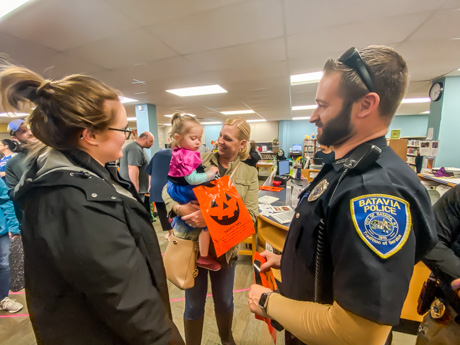



Photo: Liberty man on Main Street
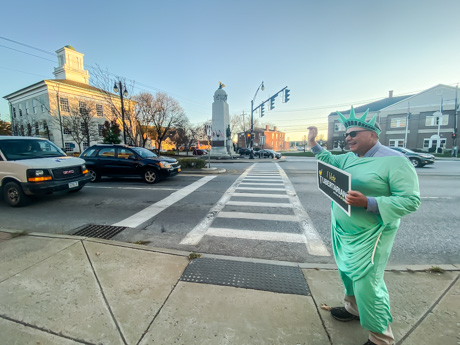
David Olsen, former chairman of the Genesee County Libertarian Party, lost a bet on the Yankees so he had to wear a Statue of Liberty Costume on Main Street in Batavia yesterday, which he did, waving a sign that said "Vote Libertarian."
Joining him was Deborah Kerr Rosenbeck, a City Council candidate.
